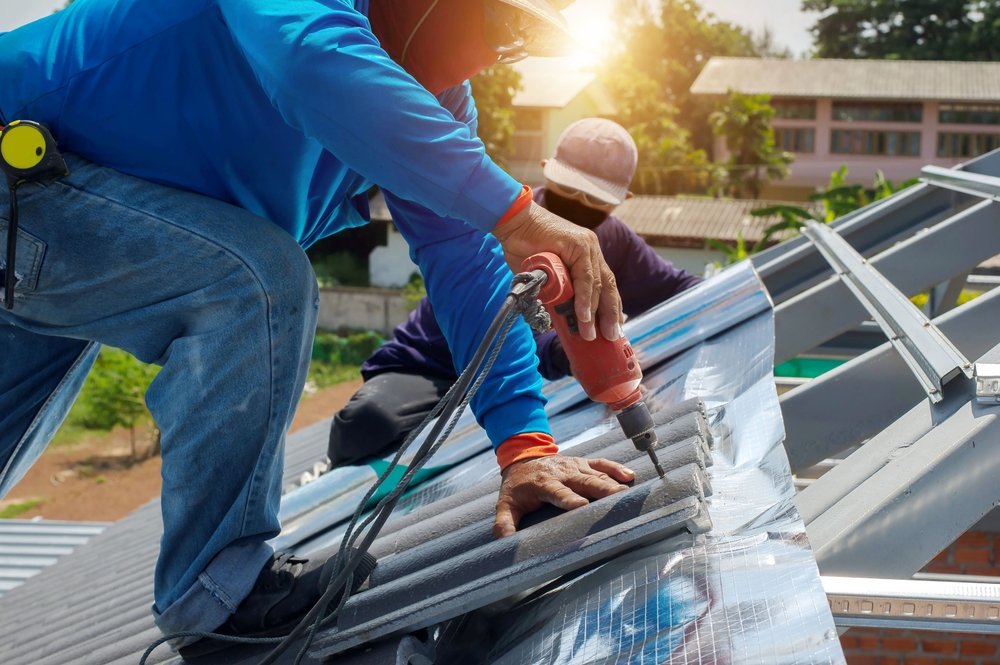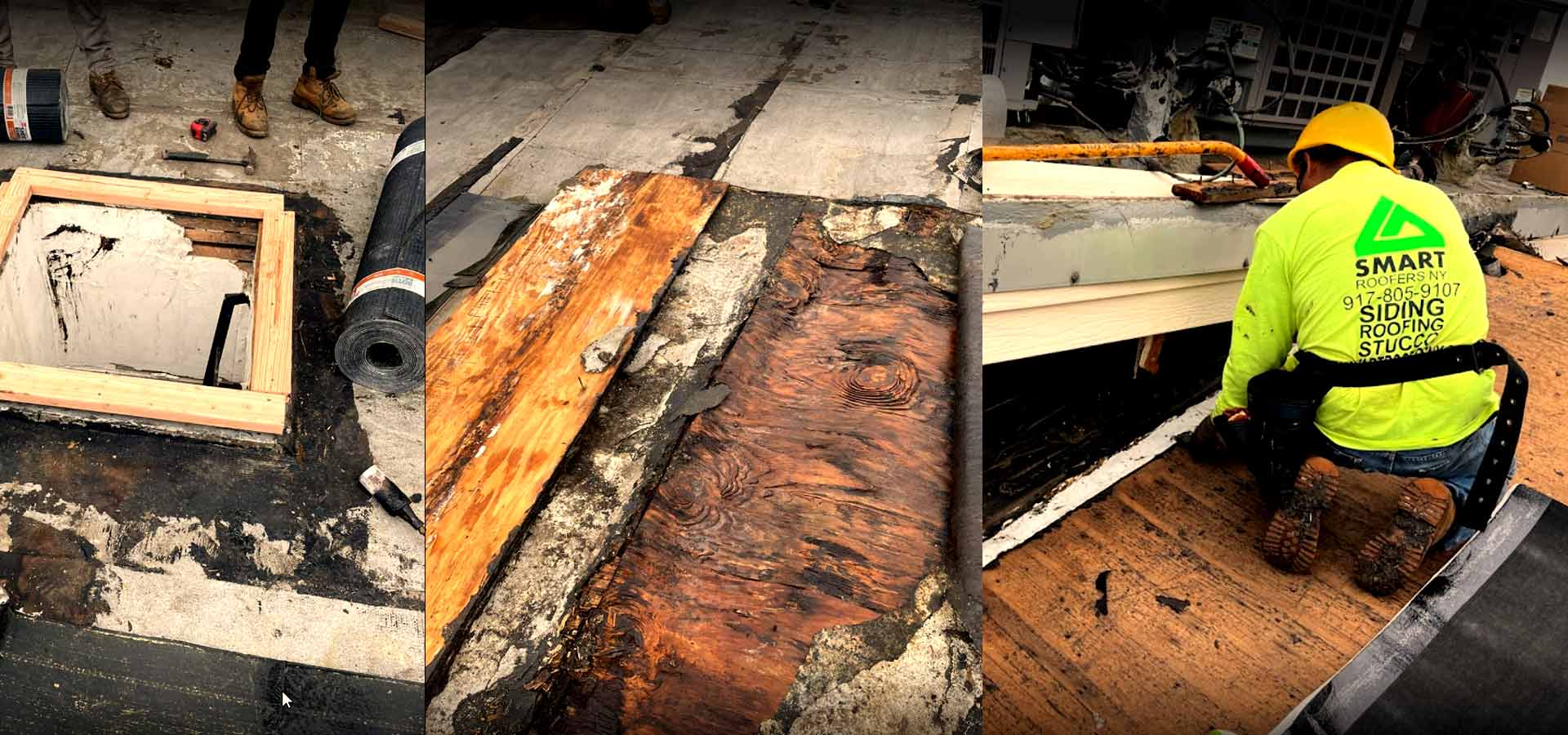Comprehending the Different Kinds Of Roof Coverings: A Comprehensive Guide for Homeowners
In the world of homeownership, choosing the appropriate roof design is a decision that carries significant ramifications for both functionality and visual allure. With an array of options-- varying from the conventional gable to the modern flat-- each kind presents special advantages and difficulties that ought to straighten with the home owner's details needs and environmental factors to consider. Comprehending these differences not just help in making an educated choice however additionally influences lasting upkeep and energy effectiveness. As we explore the intricacies of different roofing system kinds, it comes to be apparent that size does not fit all; the ideal selection may stun you.
Gable Roof Coverings
Gable roofs, defined by their triangular form, are amongst one of the most preferred roofing designs due to their simpleness and efficiency in losing water and snow. This style features two sloping sides that satisfy at a ridge, permitting efficient drain and lessening the threat of water accumulation. The high pitch generally connected with gable roofing systems improves their capability to handle heavy precipitation, making them suitable for different climates.
In enhancement to their functional benefits, gable roof coverings supply aesthetic flexibility. They can be adjusted to numerous building designs, from typical to contemporary homes. The design can additionally suit added attributes such as dormer windows, which enhance all-natural light and ventilation in the attic space.
In addition, saddleback roofs provide ample space for insulation, adding to energy effectiveness. Home owners can pick from a variety of roof materials, consisting of asphalt roof shingles, metal, and tiles, even more enhancing customization choices.
Regardless of their benefits, saddleback roofs may require extra support in areas susceptible to high winds or heavy snowfall. In general, the saddleback roof continues to be a popular option because of its blend of performance, toughness, and visual appeal.
Flat Roofs
Flat roofing systems are often identified for their minimalist layout and practical applications, particularly in business and commercial setups (oahu roofing). These roof coverings feature a straight or almost horizontal surface, which enables easy construction and versatile room usage. While they may do not have the visual allure of angled roofs, flat roofings offer numerous advantages, specifically in metropolitan settings where taking full advantage of area is essential
Among the key benefits of level roofing systems is their accessibility. Homeowners can utilize the roof space for various objectives, such as roof yards, terraces, or photovoltaic panel setups. Additionally, flat roofing systems are generally much more cost-efficient to maintain and mount compared to their sloped equivalents, as they call for less products and labor.
Nonetheless, level roof coverings do present specific challenges. Appropriate drainage is important to prevent water merging, which can cause leaks and architectural damages. Therefore, picking high-grade waterproofing products and routine inspections are crucial for ensuring durability. Common products utilized for flat roof coverings include built-up roof (BUR), changed asphalt, and single-ply membrane layers, each offering distinct benefits. Generally, flat roofing systems work as a functional and adaptable choice for lots of house owners and companies alike.
Hip Roofing Systems
Hip roofs are defined by their sloped sides that assemble on top, developing a ridge. This style stands out from saddleback roofs, as all 4 sides of a hip roof slope downwards towards the wall surfaces, giving an extra steady framework. The blog here angle of the slopes can differ, allowing for adaptability in architectural aesthetics and functionality.
One of the primary benefits of hip roofings is their ability to stand up to hefty winds and damaging climate condition. The sloped surface areas enable much better water drain, lowering the threat of leaks and water damages. Furthermore, hip roofings offer enhanced attic room, which can be made use of for storage or perhaps exchanged habitable areas.
Nonetheless, constructing a hip roof can be more complicated and expensive than less complex roof kinds, such as saddleback roofs. The added product and labor included in developing the inclines and guaranteeing proper structural integrity can cause greater costs. In spite of these disadvantages, numerous property owners prefer hip roofing systems for their resilience, visual charm, and possibility for energy effectiveness.
Mansard Roofs
Mansard roofs, commonly identified by their distinct four-sided design, function two slopes on each side, with the lower slope being steeper than the top. This building style, stemming from France in the 17th century, is not just visually appealing but practical, as it makes the most of the usable area in the upper floors of a structure. The high lower slope enables more headroom, making it a perfect option for lofts or attic rooms, which can be converted into living rooms.
Mansard roofs are defined by their versatility, accommodating various architectural styles, from standard to modern-day. They can be built with various products, consisting of asphalt roof shingles, slate, or metal, supplying home owners with a series of alternatives to fit their budgets and preferences. In addition, the design permits the integration of dormer home windows, boosting all-natural light and air flow in the upper levels.
However, it is vital to take into consideration the possible drawbacks. Mansard roofing systems may require even more maintenance due to the intricacy of their design, and their high slopes can be testing for snow and rain drainage. Generally, mansard roofs combine elegance with usefulness, making them a preferred option among homeowners looking for distinct building attributes.
Lost Roofings
As property owners increasingly look for simpleness and functionality in their architectural designs, dropped roofings have actually become a popular option. Characterized by a single sloping aircraft, a shed roofing system presents a minimalist aesthetic that matches various home designs, from modern to rustic.
One of the key benefits of a shed roofing system is its uncomplicated building and construction, which commonly equates to reduce labor and material prices. This design permits efficient water drainage, decreasing the threat of leakages and water damages. Additionally, the upright incline provides adequate area for skylights, boosting all-natural light within the interior.
Lost roofs likewise use versatility in regards to usage. They can be efficiently integrated right into additions, garages, or outside frameworks like structures and sheds. Furthermore, this roof covering style can accommodate numerous roof covering products, including metal, asphalt roof shingles, or perhaps environment-friendly roofing systems, straightening with environmentally friendly best site initiatives.
Nevertheless, it is vital to think about local environment conditions, as hefty snow lots may demand modifications to the roofing system's angle or framework. On the whole, lost roof coverings offer a useful and cosmetically pleasing option for property owners wanting to maximize functionality without compromising style.
Final Thought


Gable roof coverings, characterized by their find more info triangular form, are among the most popular roofing styles due to their simplicity and effectiveness in losing water and snow. oahu roofing. The steep pitch frequently linked with gable roofs boosts their capability to manage heavy precipitation, making them appropriate for different climates
While they might lack the visual appeal of pitched roofing systems, level roofs use countless advantages, especially in urban atmospheres where making the most of room is essential.
